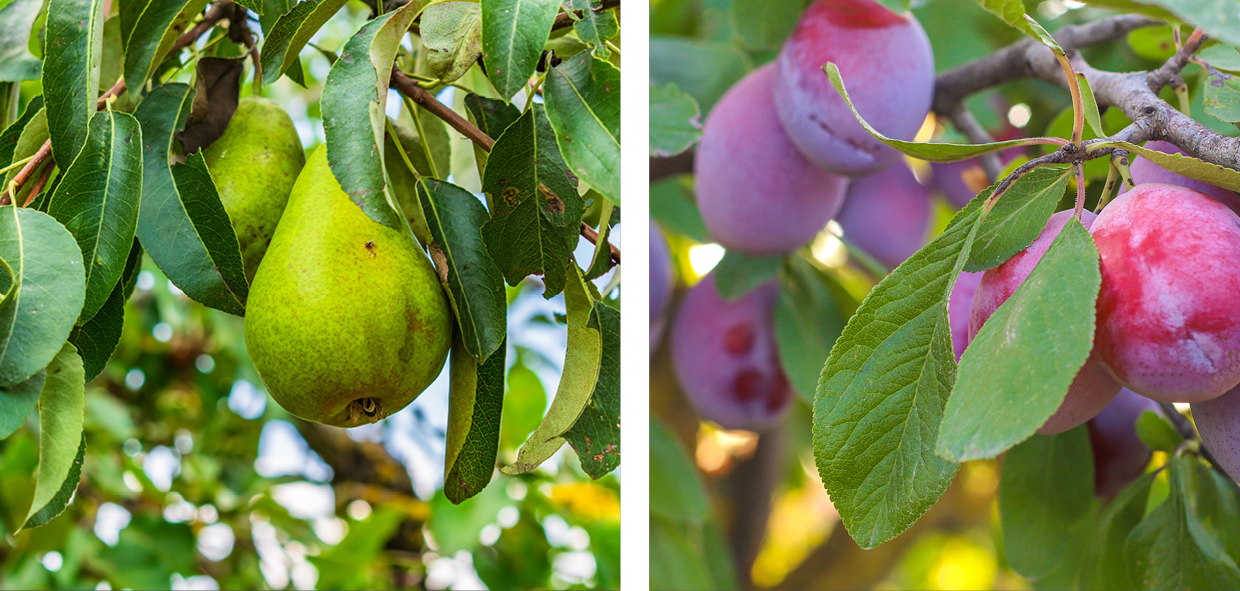
At this time of the year, interest in growing your own fruit tree— whether in the garden, on the allotment plot or at a public space or ‘community orchard’ — is never higher. The good news is that late autumn and winter are the best time to get new fruit trees in the ground! However the last thing you what to do is waste your time — after all, fruit trees can live for years so it’s worth getting it right. It seems sensible to take a seasonal look at what to consider before getting started. It’s a big topic so we’ll look at where, when and what to plant. This is only part one— there’s more to follow next month!
The first issue is whether your proposed planting area is suitable. There are lots of questions here. Is it big enough? Will the trees get enough light? The latter is often overlooked but it’s important to remember that most types of tree fruit need maximum sunshine to ripen and properly develop flavour. Almost conversely we also need to consider the issue of shading. Bigger trees can block light, so when choosing a spot, make sure to carefully consider the rest of the garden or plot and the neighbours. Finally, what about the soil? Fruit trees are tolerant of most ground conditions but will struggle where water-logging occurs or where the soil is shallow and prone to drying out.
As for when to plant, the best time is after leaf fall. Make sure you look up the type of tree you’re growing, as the planting season can depend greatly. It varies all the way from November through to mid-March. When you do get around to buying your tree, it’s best to obtain it ‘bare-rooted’, that is grown by a nursery in the soil and dug up for transplanting. Bare rooted trees can only be planted in the winter when dormant. Trees started this way tend to establish and grow faster than those raised in pots or containers. Personally, I’d never plant a container grown fruit tree, while planting is possible at any time of year, there are several snags. Container-grown trees have roots that spiral rather than spread. This means they’re slow to fan out and have poor anchorage. Firm staking is needed if they’re to remain upright, especially in exposed positions. It can often take years for pot grown trees to settle in.
“The other initial issue to consider is what type of fruit to plant. I’ll list my favourites…
The other initial issue to consider is what type of fruit to plant. I’ll list my favourites in order of ease of cultivation — first it’s apples, then pears, plums and ‘others’. Think carefully about going for something ‘exotic’ like an apricot or peach. Global warming may yet make these viable in Yorkshire, but in my experience these are unreliable if you try grow them outside. It’s not so much the lack of warmth as the cold springs with bud-busting frosts that are the problem. Ponder too on plums — a juicy Victoria is hard to beat for taste, but plums have disadvantages. Unlike apples and pears, they cannot be stored unless frozen or processed. Resist the temptation to go for nuts like hazel. Unless you can somehow fend off squirrels and rodents, there’ll never be a worthwhile harvest. Generally, if you’re looking to plant more than a handful of trees making the majority of them apples and adding a few pears and plums will give the best return. Perhaps throw in a quince and medlar if you want something out of the ordinary. Finally, of course, it’s what you like. There’s no point in having an orchard full of pears, (for me the best tree fruit to grow because it’s hard to buy the flavour of a home grown, truly ripe pear), if you don’t like them.
Next time in part 2 we’ll be deciding on the form, that is the size and style of fruit tree, and the mysteries of rootstocks and the like.











Add a comment